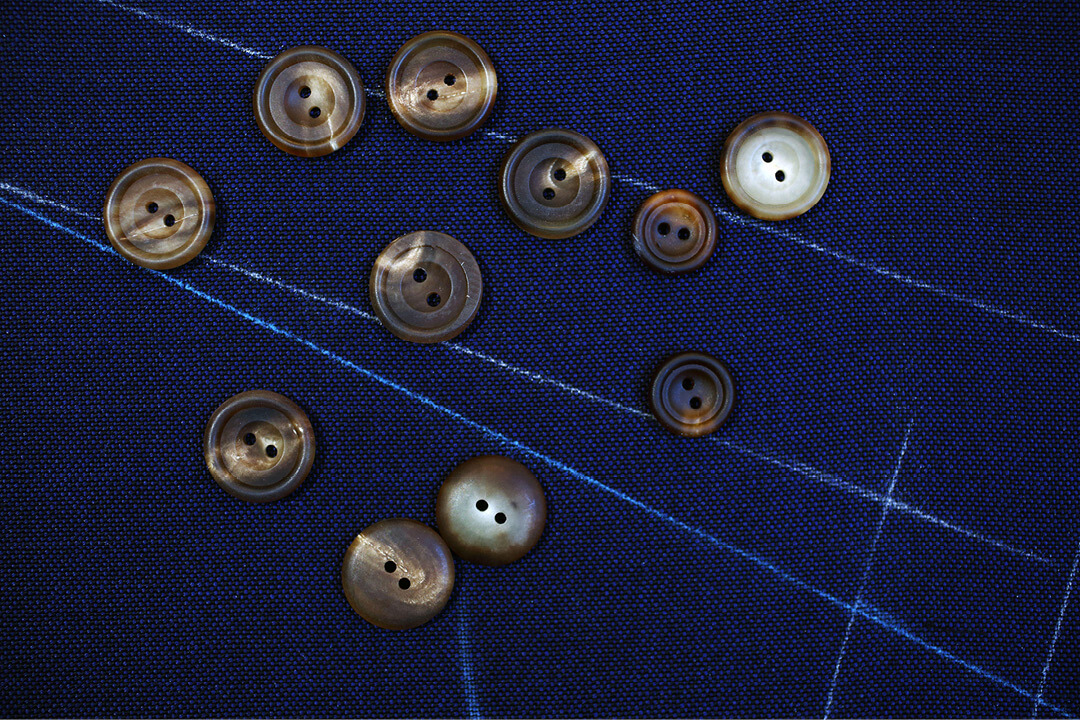CRAFTSMANSHIP FOR THE PERFECT FIT
An off-the-peg suit is good. Made-to-measure is better. Bespoke tailoring is perfect
Things to know before visiting the tailor
You can buy suits online, but it is advisable to visit a stationary retailer. For the layman, the quality of the fabric can only be checked on site and the fit can only be assessed in front of a mirror. Some specialist stores have an employee with basic knowledge of tailoring on site for minor alterations or can order them at short notice with a phone call.
If you have standard measurements or a figure that corresponds well to the cut models of the respective brand, you are in luck and look dressed.
If you want or need to go one step further, you end up with made-to-measure clothing and this is where the confusion of terms begins.
Not all made-to-measure clothing is the same
The term is used in different ways. In the majority of cases, made-to-measure clothing means that there are a few basic shapes of suits, jackets, trouser suits, dresses or coats to choose from.
These basic shapes are then adapted to the individual body measurements in a few key areas. A good example is the length of the sleeves, the width of the shoulders, the chest and waist circumference and other essential measurements that vary from person to person.
Compared to the patterns, there is a greater choice of fabrics. Most suppliers of made-to-measure clothing have the pattern books of the most important fabric suppliers in stock, from which you can choose fabrics to your heart’s content.
 Gieves&Hawkes, Savile Row, London © Alamy Stock Photo
Gieves&Hawkes, Savile Row, London © Alamy Stock Photo
The choice is usually overwhelming, so advice on which fabric quality has which advantages and disadvantages is important. Choosing a fabric requires specialist knowledge and experience, as some fabrics are very sensitive and are less able to withstand the rigors of frequent travel than others.
Some fabrics can be worn almost all year round, others are more ideal for summer or colder seasons. The different qualities of wool alone are a small science in themselves.
There is also usually a relatively large selection of colors to choose from for the inner lining. The buttons are usually more restrictive.
Always in the back room
The customer’s measurements and individual fabric requirements are then sent to a tailor’s workshop. This can be located anywhere: In a back room or on another continent where tailoring skills are plentiful and wages are relatively low.
The garment customized according to the measurements is tried on by the customer and further alterations, if necessary, can be made at this or another fitting appointment.
It takes around four to six weeks from the selection to the finished garment. Unless you are on location in Hong Kong, Bangkok or Shanghai, where it is more likely to take four to six days.
However, the term “made-to-measure” is also used by some suppliers who use it to mean a completely individualized item of clothing. A tailor-made piece, so to speak.
Bespoke tailoring is the measure of all things
Anyone who wants to invest around three times the price of the custom-made clothing, which is individualized in some respects, can have an appropriately trained tailor make a garment that is literally tailored to his or her body.
Individuality begins in the first step of the selection process: Anything is possible. A classic suit, a fashionable suit, a suit as it was worn decades ago, a mixture of different decades or even centuries. There are no limits to your imagination.
All body measurements are taken and all the customer’s wishes are noted: should the trousers sit high up, should they be comfortably wide or tight? All the customer’s wishes and measurements are noted and a sample suit is made first.
After the fitting and in combination with the choice of fabric, the measurements are transferred to a paper sample, which later remains with the tailor and serves as an individual specification for further orders.
The final garment is then created: every seam, every buttonhole, every pleat, every sleeve edging etc. is actually sewn by hand.
Egon Brandstetter, a bespoke tailor in Berlin, describes the individual steps involved in making a bespoke suit as follows: 12,000 hand stitches and 120 individual parts are processed in 80 working hours. This does not include special activities, such as a very special way of ironing the shoulder and upper arm sections of a suit, which only a few experts can do.
Tailoring a garment is craftsmanship at the highest level and requires very special skills that take years to learn.
 Savile Row, London © Alamy Stock Photo
Savile Row, London © Alamy Stock Photo
Not only on Savile Row
Savile Row in London is the Mecca of bespoke tailoring. This street and the surrounding area is home to many of the most famous English bespoke tailors, such as Gieves & Hawkes, Huntsman, Anderson & Sheppard and many more.
Custom tailoring is still a predominantly male profession, at least in the area of men’s suits. But there is still a small, growing number of female tailors who are successfully holding their own.
One of the first women to become the first female cutter at Gieves & Hawkes was Kathryn Sargent. The cutters are specialists who use their famous tailor’s scissors to take the paper measurements of the customer’s garment and then cut the precious fabric accordingly using the paper measurements.
Increasingly female
Kathryn Sargent has set up her own atelier. In a video worth watching, she shows the various steps involved in tailoring a suit. The video is entitled “Why bespoke Savile Row suits are so expensive“. A two-piece suit costs her around 6,000 pounds.
 Why Bespoke Savile Row Suits Are So Expensive Insider Business, YouTube
Why Bespoke Savile Row Suits Are So Expensive Insider Business, YouTube
In return, you get a garment that is completely individual and, with a good tailor, flatters your own figure, skin and hair color and even your appearance and gait. A good tailor is a good judge of character and can empathize well with your professional or private life and make a piece that fits you perfectly and goes that little bit further.
Such a garment can even be inherited if it is well cared for, as we remind you of the clothes brush.
While more and more bespoke tailors, often trained at one of the top addresses, are opening their own studios in London, the number of bespoke tailors in Germany is becoming rather scarce. You can still find a handful in every major city, but demand in this market is nowhere near as high as in London, Tokyo, Hong Kong or Paris.
If the name Egon Brandstetter sounds familiar to you, then you probably have a good memory and remember the end credits of the film Tàr, in which Cate Blanchett was seen as a conductor who takes up a conducting position with an orchestra in Germany and has a tailcoat tailored for her. The tailor in the opening scenes was Egon Brandstetter.
It doesn’t have to be a tailcoat. You can also start with a perfect blazer, a skirt or a jacket. Once you’ve afforded yourself the luxury of craftsmanship, you’ve usually acquired a taste for it.
Cover picture, Huntsman, Savile Row, London © Alamy Stock Photo
#Advertising #ProductPlacement #IndependentRecommendation #BecauseWeLoveIt




